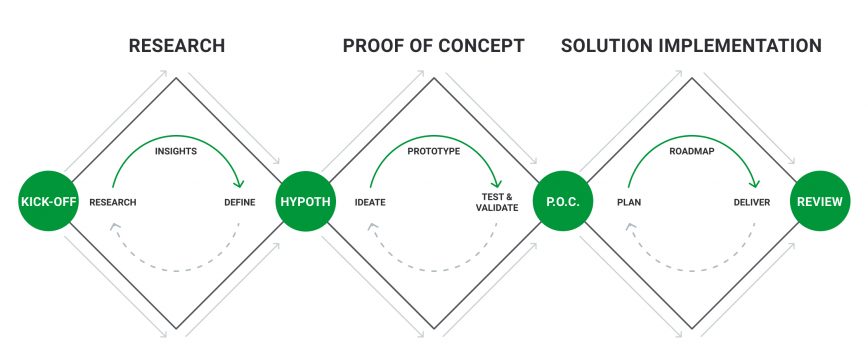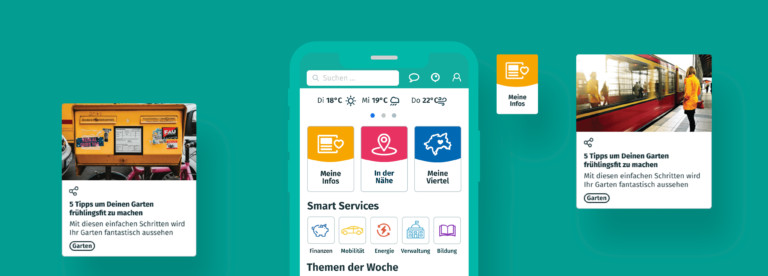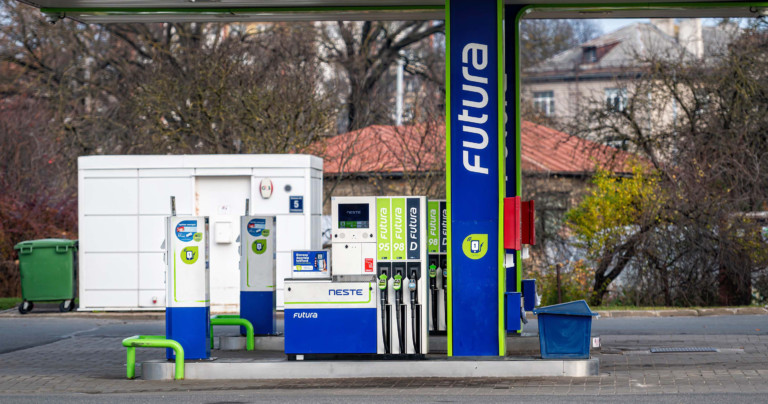Article
by Nortal
Is your digital product “green” to go? Because sustainability is stretching to the digital sphere
Sustainability has become a common principle and a familiar part of our daily lives, specifically when it comes to physical products. However, what is new is that we are becoming incrementally more aware that the digital sphere is no different. And sustainability, with its tangible benefits, from environmental and social impact to economic viability, is gaining momentum in digital products.
Building and designing sustainable digital products and services is largely based on circular economy principles. In short, applying sustainability to design means that we consider the product’s entire life cycle. We make sure that it’s efficient, optimized, adaptable to system changes, reparable, reusable, and carries longevity as a major asset.
Like physical products, digital sustainability aims to build solutions that offer a higher value than what was lost in its making. Furthermore, the benefits range from scalability to optimized resources, cutting costs, saving energy, reducing digital waste, and increasing customer retention through the service’s consistency and integration initiatives.
This leads us to the next challenge: It is estimated that more than 80% of all product-related environmental impacts are determined during the product’s design phase. Inspired by this challenge and responsibility, we composed a checklist for quick self-assessment that helps to be wise about the methodology and tools when developing a sustainable product and service while having its long-term perspective and entire life span in mind.
10 steps to digital sustainability
Our 10-question checklist is a brief audit to determine how well-optimized and sustainable your current digital product or service is. It doesn’t matter if you have an already-existing service or you’re in the middle of developing it. It helps to audit the main categories relevant to sustainability, starting from business models to implementation tools.
We have mapped out the checklist items according to the service design phases, so you can discover optimization possibilities every step of the way – in the research and analysis phase, in the middle of creating a proof of concept, or already developing and implementing your solution.
Note that digital products are always interconnected with physical resources, starting from hosting servers and energy resources to supply chain operations, which is why digital sustainability also involves revising related processes and user journey steps in the physical world.
Let’s take a closer look at the steps in each development phase.

Research
1. Do you know which factors influence the current environmental impact of your product or service? For example, are your third-party partners rated by sustainability, e.g., a sustainability-minded hosting provider? We recommend mapping out the physical resources your digital service is using (i.e., distribution channels, supply chain operations, and all other physical resources involved in providing the service). Discover more sustainable alternatives and try to optimize the number of resources. (Read more: Planet Centric Toolkit: Business Model Flip Canvas)
2. Do you know the number of steps your end-user has to take to use your product or service? It’s a golden rule – the fewer steps a user has to make for a service or product, the lower the drop rate. Map out your customer’s user journey (including physical) and optimize the number of steps and clicks the end user has to make. Optimizing the omnichannel journey to complete a task helps eliminate unnecessary energy usage and enables more efficient user onboarding, service utilization, and offboarding while improving user experience significantly.
3. Do you have a plan for how to track your digital footprint? For starters, it helps to measure the carbon footprint of your website, e.g., by using tools like websitecarbon.com. For comparison, we advise measuring it first as-is and then again after implementing the checklist.
Proof of Concept (POC)
4. Are you using a design system? Designing a user interface with the help of a design system allows you to easily increase the efficiency of the design process, reusability, and longevity of your product and service, not to mention the indisputable advancement in quality and scalability. For this reason, a design system as a development tool is becoming increasingly actual in developing large-scale government e-services.
5. Are you following Web Content Accessibility Guidelines (WCAG) standards in UI/UX design? In a nutshell, the standard is about making accessibility a feature, not a fix. Following these standards makes your product or service more accessible for everyone (including users with disabilities). By improving access to your product or service, you can address and reach a wider audience. Also, with efficient web content, you are improving both the user experience and the quality of your product. The standard is especially crucial in government e-services because state services need to be easily accessible to everyone.
6. Are you utilizing your customer’s data to provide personalized offers? Being smart about your customers’ data means making data-informed design decisions and using it to tailor as personalized content as possible. Besides a seamless customer experience, personalization allows you to offer relevant information to the user proactively. Thus, saving the end-users time significantly. Another trick here is to enable fast feedback and the possibility to rate your product or service. Feedback is invaluable when you’re aiming for a product that is lasting and sets the bar in quality. The more immediate and faster the user feedback, the more competitive and effective product you can build.
Solution implementation
7. Are you reusing data instead of asking users for the same data over and over again? Reusing and sharing data throughout your service saves energy and time spent searching for relevant information, not to mention end-users’ nerves. For the service provider, it reduces technical loads on repetitive data requests and eliminates the need to collect and store duplicated data. A prominent example is the X-Road® software-based solution X-tee, the backbone of e-Estonia. Invisible yet crucial, it allows the nation’s hundreds of public and private sector e-service information systems to link up and function in harmony, saving Estonians 844 years of working time every year.
8. Is your code clean and easily scalable? The value of well-structured and well-designed code increases over time. It doesn’t matter what kind of development methodologies, frameworks, or tools you use; clean code is the foundation for achieving faster and easier development, testing, and maintenance, making it much easier to extend and add new features to the solution in the future. As a result, it reduces the costs of software ownership. Additionally, clean code has a favorable side effect on the solution’s performance in loading speed and reduced energy consumption.
9. Are you compressing media files? This is a sometimes underestimated point, but in reality, it’s an important step to ensure the faster loading of images and video content. Furthermore, the energy cost of data usage on the internet is estimated to be 20,151 PetaBytes per month (Cisco 2011). This is equivalent to 241 billion GB per year. And the first step in stopping data centers from gobbling up the world’s electricity is by optimizing your digital content – for starters, via the TinyPNG webpage analyzer.
10. Are you following Web Content Accessibility Guidelines (WCAG) standards in development? This cannot be overlooked when aiming for faster and more efficient access to content. The benefits can be further enhanced with assistive technologies like text-to-speech or listening devices. As with several previous points, the digital touchpoint can improve sustainability by reducing the user’s steps in the physical world. In other words, when a person can’t access the required information over the web due to it being too complicated or inaccessible, he or she will likely try to obtain it via less ecological methods (e.g., driving to the service providers’ office).
Digital sustainability goes hand in hand with your business goals
UX designer, Natascha Mehrabi, summed up the idea nicely: “The steps we take to reduce energy usage are often the same ones we take to increase load times, improve customer experience, and even reduce costs.”
The shift in paradigm and bringing sustainability into digital design is more than just about an environmentally friendly mindset. More precisely, the ecodesign strategy helps us to think through how to continuously elevate the value of the product and service while maintaining its functionality, aesthetics, and practicality. It’s fair to say that these objectives make up a large part of a product’s value proposition.
For example, in the case of the Bliggit app, by following the sustainability and circular economy principles, we achieved a secure and efficient digital infrastructure for the city of Wuppertal in Germany. The app makes all the fragmented services offered by the city (e.g., news, transport, banking, recreational activities, and a lot more) accessible to the citizens through a single digital channel, thus, optimizing resources, saving time and energy, and eliminating the need for each business and service provider to develop and maintain their own platform.
To sum it up, if you checked most of the boxes on our checklist above, you are “green” to go. But if most topics generated questions about your development process – and you would like to improve your product or service from a sustainability point of view – we can help you conduct a more detailed audit and set up a reasonable plan to optimize your business.
Get in touch
Let us offer you a new perspective.

